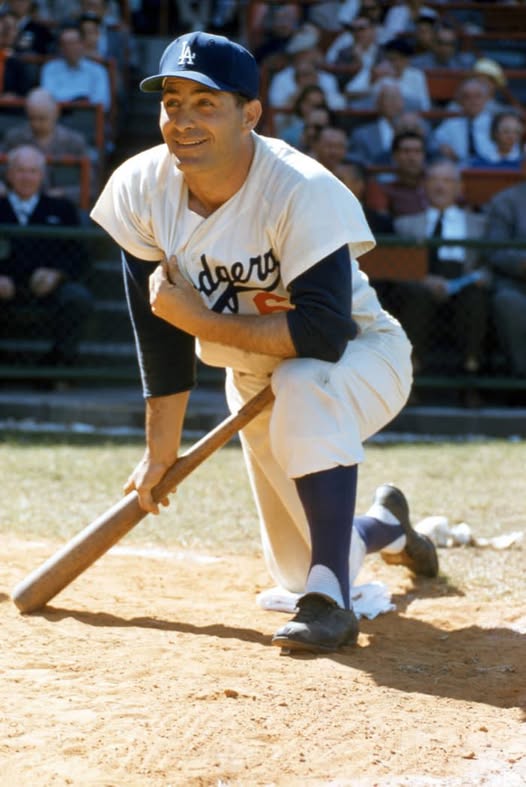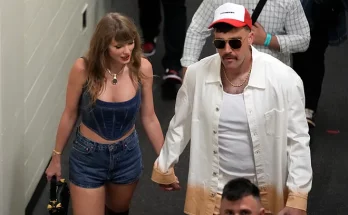For 15 seasons, Carl Furillo quietly patrolled the outfield for one of the most storied franchises in Major League Baseball history. Known to his teammates and fans as “The Reading Rifle” for his cannon of an arm and his hometown near Reading, Pennsylvania, Furillo spent his entire career with the Dodgers — first in Brooklyn, then in Los Angeles — from 1946 to 1960. Despite a career that included a World Series ring, an All-Star nod, and the respect of peers and rivals alike, Furillo’s legacy remains curiously underappreciated in the wider tapestry of baseball history.
Born on March 8, 1922, in Stony Creek Mills, Pennsylvania, Furillo was the son of Italian immigrants and grew up with a strong work ethic. He signed with the Dodgers organization in 1940 and made his major league debut in 1946 after serving in the military during World War II. From the start, Furillo distinguished himself as a reliable and well-rounded player, known more for consistency than flash. Yet, while others grabbed headlines, Furillo quietly amassed numbers that warrant a closer look — and more acclaim than they’ve historically received.
Master of Consistency
Carl Furillo’s career numbers paint the picture of a complete hitter with a rare blend of average, power, and clutch ability. Over the course of 1,806 games, he hit .299 — tantalizingly close to the elusive .300 benchmark that often separates the good from the great in baseball lore. His career on-base percentage (OBP) of .355 and slugging percentage of .458 yield an OPS (on-base plus slugging) of .813, a testament to his offensive value during an era that featured Hall of Fame outfielders like Willie Mays, Stan Musial, and Duke Snider, Furillo’s teammate.
He drove in 1,058 runs and launched 192 home runs — not gaudy totals by modern standards, but significant achievements in the context of his era and ballparks. Moreover, he tallied 1,910 hits, 324 doubles, and 56 triples, all while striking out only 457 times in over 6,000 plate appearances. His 1953 season was perhaps his finest: he led the National League with a .344 batting average and finished ninth in MVP voting. That year, he also hit 21 home runs and drove in 92 runs, establishing himself as one of the most dangerous hitters in the lineup of the beloved “Boys of Summer.”
Defensive Excellence: The Reading Rifle
While Furillo’s bat was solid, his glove and throwing arm turned heads and won games. Playing mostly in right field, he was revered for his arm strength and pinpoint accuracy. Ebbets Field, the Dodgers’ home in Brooklyn, had a notorious right field wall with a sharp corner that made caroms unpredictable. Furillo mastered that corner, routinely gunning down baserunners who dared to challenge him.
Over his career, he amassed 151 outfield assists, frequently ranking among the league leaders. His arm earned him the nickname “The Reading Rifle,” and stories abound of runners thrown out at third or home plate from the deep right field corner — plays that would go viral in today’s digital age.
Teammates and opponents alike spoke in awe of Furillo’s arm. Hall of Famer Monte Irvin once said, “He had the best arm of any outfielder I’ve ever seen — strong and accurate.” That combination made Furillo a defensive asset even when his bat slumped. He won respect the hard way: with performance, not publicity.
The Brooklyn Years: A Team on the Cusp
Furillo was a mainstay on the Dodgers teams that so often came heartbreakingly close to World Series glory in the late 1940s and early 1950s. Brooklyn fans lived and died with the “Boys of Summer,” who frequently finished second to the hated New York Yankees or St. Louis Cardinals.
In 1951, the Dodgers suffered one of baseball’s most infamous collapses, losing the pennant to the New York Giants on Bobby Thomson’s “Shot Heard ’Round the World.” Furillo, who had played a steady season, could only watch as one of the darkest days in Dodgers lore unfolded.
But brighter days were ahead.
In 1955, everything came together. The Dodgers, led by Jackie Robinson, Duke Snider, Roy Campanella, Pee Wee Reese, and yes, Carl Furillo, finally defeated the Yankees in seven games to capture the franchise’s first World Series title. Furillo hit .296 during the season and remained a key part of the Dodgers’ balanced attack.
He played in five World Series overall (1947, 1949, 1952, 1953, 1955), finally tasting redemption in 1955. Furillo was injured in the 1955 Fall Classic and didn’t play a huge role in the postseason, but his contributions during the regular season and years prior were critical in helping the Dodgers get over the hump.
A California Ending
Furillo made the transition with the Dodgers from Brooklyn to Los Angeles in 1958, one of the few players who bridged the East Coast and West Coast eras. Though his playing time and stats declined due to age and injuries, he remained a respected veteran presence.
In 1959, the Dodgers won their second World Series title — the first in Los Angeles — and Furillo earned another ring. He played in only 50 games that season but was still an important clubhouse leader. Unfortunately, his career ended on a sour note when the Dodgers released him in 1960 after an Achilles tendon injury. Furillo sued the team, claiming they had released him to avoid paying pension benefits, a rare move at the time. He eventually won a settlement, but the case cost him relationships in the baseball community.
After his retirement, Furillo faded from the public eye, working various blue-collar jobs, including as an elevator installer and security guard. He rarely gave interviews and avoided the spotlight, consistent with his understated playing days.
Why Was Carl Furillo Overlooked?
Despite his achievements, Furillo remains something of a forgotten figure among Dodgers legends. There are several possible reasons.
First, he played alongside bigger personalities and higher-profile stars — Robinson, Snider, Campanella, Reese — all Hall of Famers whose groundbreaking legacies or outsized charisma naturally attracted attention.
Second, Furillo never sought fame. He was a reserved, workmanlike figure, uncomfortable with the media and content to let his play speak for itself. In an era that increasingly celebrated big personalities, Furillo didn’t play the game off the field.
Third, some argue that anti-Italian sentiment during his era may have contributed to his lack of national acclaim. Furillo was sometimes portrayed as temperamental or uncooperative, which may have stemmed more from cultural misunderstanding than actual misconduct.
Finally, injuries and his acrimonious exit from the game likely hindered his long-term recognition. He didn’t stay in the public eye as a coach, broadcaster, or ambassador. He wasn’t inducted into the Hall of Fame and didn’t receive many of the post-career accolades given to his peers.
Legacy: A Dodgers Great, If Not a Household Name
Carl Furillo died in 1989 at the age of 66, but his legend endures in pockets of baseball fandom, especially among Dodgers historians and fans who cherish the Brooklyn era. He’s a cult hero of sorts — the quiet sniper with the cannon arm, the .300 hitter who never got his due, the blue-collar ballplayer who symbolized everything noble about the game’s working-class roots.
Though not enshrined in Cooperstown, Furillo’s number 6 is fondly remembered by generations of fans, and many believe his contributions are overdue for broader recognition. Some have lobbied for his induction into the Hall of Very Good — a fictional honor for players who may not be Hall of Famers but were undoubtedly significant.
His place in baseball history may be subtle, but it is sturdy. Furillo’s story reminds us that greatness isn’t always loud or headline-grabbing. Sometimes, it’s measured in steady excellence, quiet confidence, and the unshakable respect of your peers.
In a franchise that has seen legends come and go, Carl Furillo remains one of the foundational figures — a right fielder with a rifle arm, a bat that never quit, and a loyalty that spanned both coasts and 15 unforgettable seasons.



